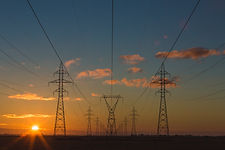top of page



Remote Sensing and InSAR Consultancy
Combining Satellite Data with
Engineering Insight

We combine expertise in civil engineering, satellite remote sensing, and GIS to deliver clear, reliable information to global stakeholders in infrastructure, mining, energy, and insurance.

Services
We Offer a Range of Services to
Meet Your Needs
Displacement Measurement
We use InSAR techniques to measure ground displacements with millimetric accuracy in various geological environments.
Susceptibility Mapping
Geohazard susceptibility mapping for landslides and subsidence using satellite imagery and engineering expertise.
Soil Moisture Detection
We analyse satellite images to track soil moisture changes, crucial for assessing susceptibility to geohazards.
 |  |  |  |  |
|---|---|---|---|---|
 |  |
Our Clients
.png)





.png)









.png)

.png)
.png)
.png)
.png)

.png)
















bottom of page





